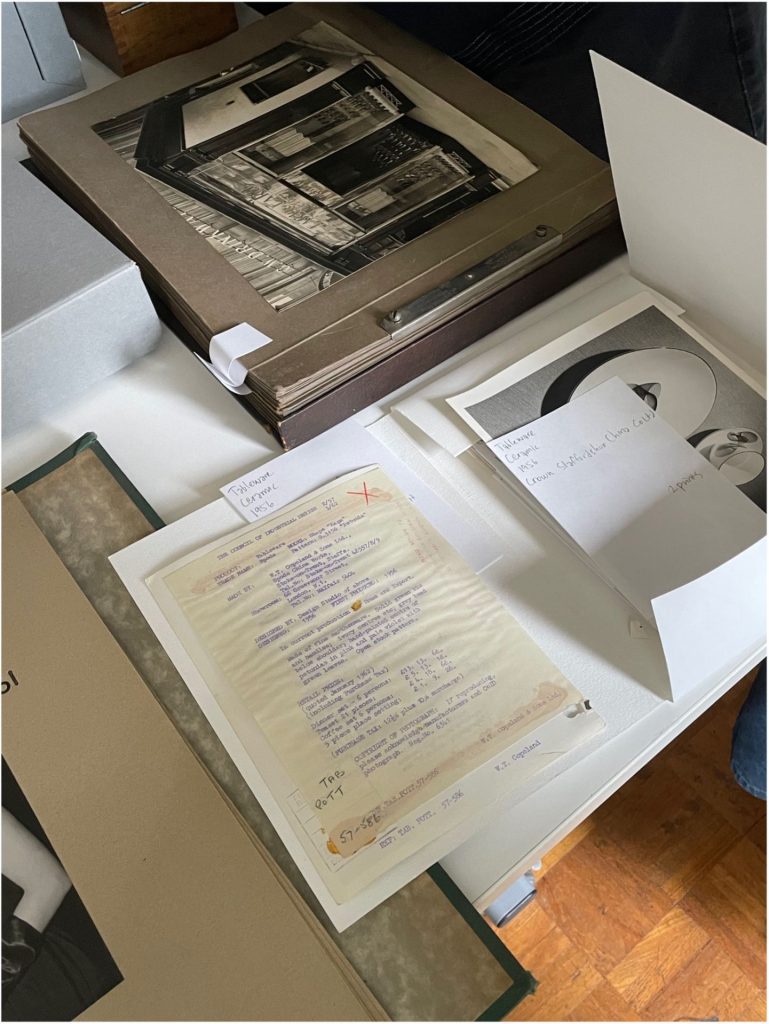Dr Uschi Klein reflects on the second session of a workshop series on ‘Archival Sources and Methodologies’ organised with the University of Brighton Design Archives.
We all think about photography in one way or another; after all, photography is ubiquitous, both online and offline. Forming a central part of my own research and teaching, I constantly think about photography and its different social, cultural, historical and political functions and relationships. As emphasised by Professor Darren Newbury and PhD students Kamal Badhey and Jayne Knight in their three short but very insightful ‘lightning’ talks during the photography workshop on 25th May, these relationships are complex and worth exploring. Indeed, they often reveal more than meets the eye by what is framed in the photographs.

Material from the Design Archives
Extending Susan Sontag’s “invitation to pay attention, to reflect, to learn”, Darren Newbury, Professor of Photographic History at UoB, delivered the first talk and shared some very useful practices and methodological ideas for when visiting photographic archives, not least because one has never enough time to look through entire collections during one visit, thus ending up adopting a rather pragmatic approach to searching an archive. For example, Darren reminded us that photographs never exist in a vacuum. They are made by photographers and are often accompanied by text or a label, which enables us to explore photographs within different contexts. That way, we can start looking for performative moments in photographs and imagining what photography (or the photographer) was doing at the time the picture was taken. Ultimately, Darren said, this approach can expose the relationship between archival images and the present.
Kamal Badhey, a PhD student at UoB, gave the second talk and revealed her interest in visual storytelling through the work she does as an educator and photographer with young people, communities and underrepresented voices. I found Kamal’s ideas around ‘learning through pictures’ and ‘thinking about photographs in diptychs’ equally valuable, reminding us that photographs can easily be taken out of context and therefore misrepresent the purpose and intention behind them. At the same time, Kamal highlighted the importance of engaging community members with archives to develop new understandings, interpretations and perspectives around historic photographs.

Material from the Design Archives
The third ‘lightning’ talk was delivered by Jayne Knight, a PhD student at UoB, whose doctoral research focuses on the Kodak Collection at the National Science and Media Museum in Bradford. Similar to the other two speakers, Jayne’s talk reinforced the importance of archival photographs but this time in the context of the museum, highlighting how historical material and photographs can impact on and contribute to new histories and practices of photography. In her examples, it was clear to see how photographs can help us reimagine spaces and experiences.
The last part of the workshop included a more hands-on approach when Sue Breakell and Lesley Whitworth from the Design Archives showed us some material objects from the Design Archives. They brought a small but fascinating collection of slides, prints, glass plates, photo albums and magazines, which we could look at and explore. I liked how they displayed the material on the table and it certainly ignited by curiosity to find out more about the objects.
My own experience of visiting archives is still limited, although my current research project on photography during Romania’s communist era (1947-1989) includes archives as a central element. That is why I found this photography workshop very informative and illuminating. I am definitely going to employ some of the approaches and ideas that were shared and discussed during the workshop to my own research and teaching.
Read about the first session on Magazines here





Leave a Reply